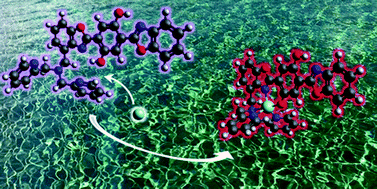Mechanistic insights into excited state intramolecular proton transfer in isolated and metal chelated supramolecular chemosensors†
Abstract
We report a computational study of excited state intramolecular proton transfer in a series of related and progressively more complex organic chromophores ranging from 2-(2′-hydroxyphenyl)-benzoxazole (HBO) through to the 5-(benzo[d]oxazol-2-yl)-2-(4-((bis(pyridin-2-ylmethyl)amino)methyl)benzo[d]oxazol-2-yl)-4 hydroxyphenolate (HDBO′) anion. The latter chelates group 12 metal cations (X = Zn2+, Cd2+ and Hg2+), and can serve as a fluorescence-based sensor for such metals. Initial π* ← π excitation of the ground (S0) state enol-tautomer induces charge separation in the first excited singlet (S1) state and drives the subsequent proton transfer (i.e. enol → keto tautomerism). The keto-tautomer constitutes a local minimum on the S1 PES, and is responsible for highly Stokes shifted fluorescent emission; S1(enol) → S0 fluorescence is proposed to account for the shorter wavelength emission from the X–HDBO′ complexes. Derivatives of HDBO′ that should retain the favourable visible absorption and heavily Stokes shifted emission properties but, additionally, offer higher fluorescence quantum yields (i.e. enhanced metal sensing capability) are proposed.



 Please wait while we load your content...
Please wait while we load your content...